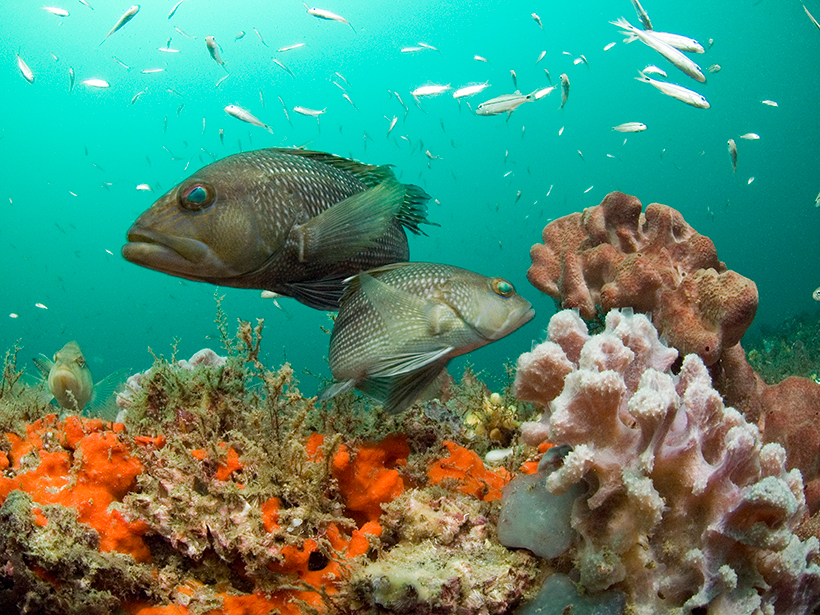One of the best ways to cool down on a hot day is to jump in the ocean. But that doesn’t mean that marine animals have it easy in the face of warming global temperatures. In fact, a new study finds that marine life is more susceptible to extreme heat waves than land-based animals.
“Animals have ways to cope with extreme heat waves wherever they might live, such as seeking shade or burrowing underground,” says Malin Pinsky, an ecologist at Rutgers University in New Brunswick, N.J., and lead author of the new study, published in Nature. “We were interested in how accessible temperature refugia are to both marine and terrestrial species and how that might affect their susceptibility to high temperatures.”
“It’s much easier to escape a heat wave on land than in the ocean.”
The team calculated the thermal safety margin—the difference between the hottest temperature that an organism can safely tolerate and the hottest body temperature when in the coolest part of their environment—for 88 marine and 299 terrestrial cold-blooded species. They found that marine species are more likely to live near their upper thermal limit than land-based species in part because terrestrial species have more access to thermal refugia such as shade or underground dens.
“It’s much easier to escape a heat wave on land than in the ocean,” Pinsky says. “It does get cooler the deeper you go, but not all marine life is equipped to dive deeper. Also, many species live on the ocean bottom, and they have nowhere to go.”
Many major extinctions have hit marine species harder than terrestrial species, including the greatest loss of life, the Permian-Triassic mass extinction around 252 million years ago, when 95% of marine and 70% of terrestrial vertebrate species went extinct.
“It’s not strictly a matter of getting too hot,” Pinsky says. “At higher temperatures, an organism’s demand for oxygen goes up, and that likely plays a role in high marine mortality rates as well.”
Overall, the study found that marine species are moving out of their historical ranges at twice the rate of land-dwelling species.
“We used to just say, ‘well as it gets hotter, organisms will all migrate polewards to higher latitudes,’ but as this study shows, it’s not that simple.”
“We know that marine species tend to colonize new areas faster than land species. The ocean has fewer barriers to migration than the land,” where species may be limited by terrain features or water availability, says Pinsky.
The new study offers a unique look at how organisms are coping with climate change, says Anthony Richardson, a mathematical ecologist at the University of Queensland who penned an accompanying News and Views article in the same issue of Nature. “We used to just say, ‘well as it gets hotter, organisms will all migrate polewards to higher latitudes,’ but as this study shows, it’s not that simple.”
The next step will be to expand the thermal safety margin database to include more species. “I’d like to see more biodiversity represented, including invertebrates, mollusks, and warm-blooded animals,” says Richardson.
Pinsky is also interested in how early life stages fare at temperature extremes.
“Eggs and larvae are often the most sensitive in terms of temperature and oxygen levels,” he says. “Understanding which life stages, species, and ecosystems will be most severely affected by warming will be important for guiding conservation and management efforts as climate change advances.”
—Mary Caperton Morton (@theblondecoyote), Science Writer
Citation:
Morton, M. C. (2019), Global warming hits marine life hardest, Eos, 100, https://doi.org/10.1029/2019EO122547. Published on 02 May 2019.
Text © 2019. The authors. CC BY-NC-ND 3.0
Except where otherwise noted, images are subject to copyright. Any reuse without express permission from the copyright owner is prohibited.

